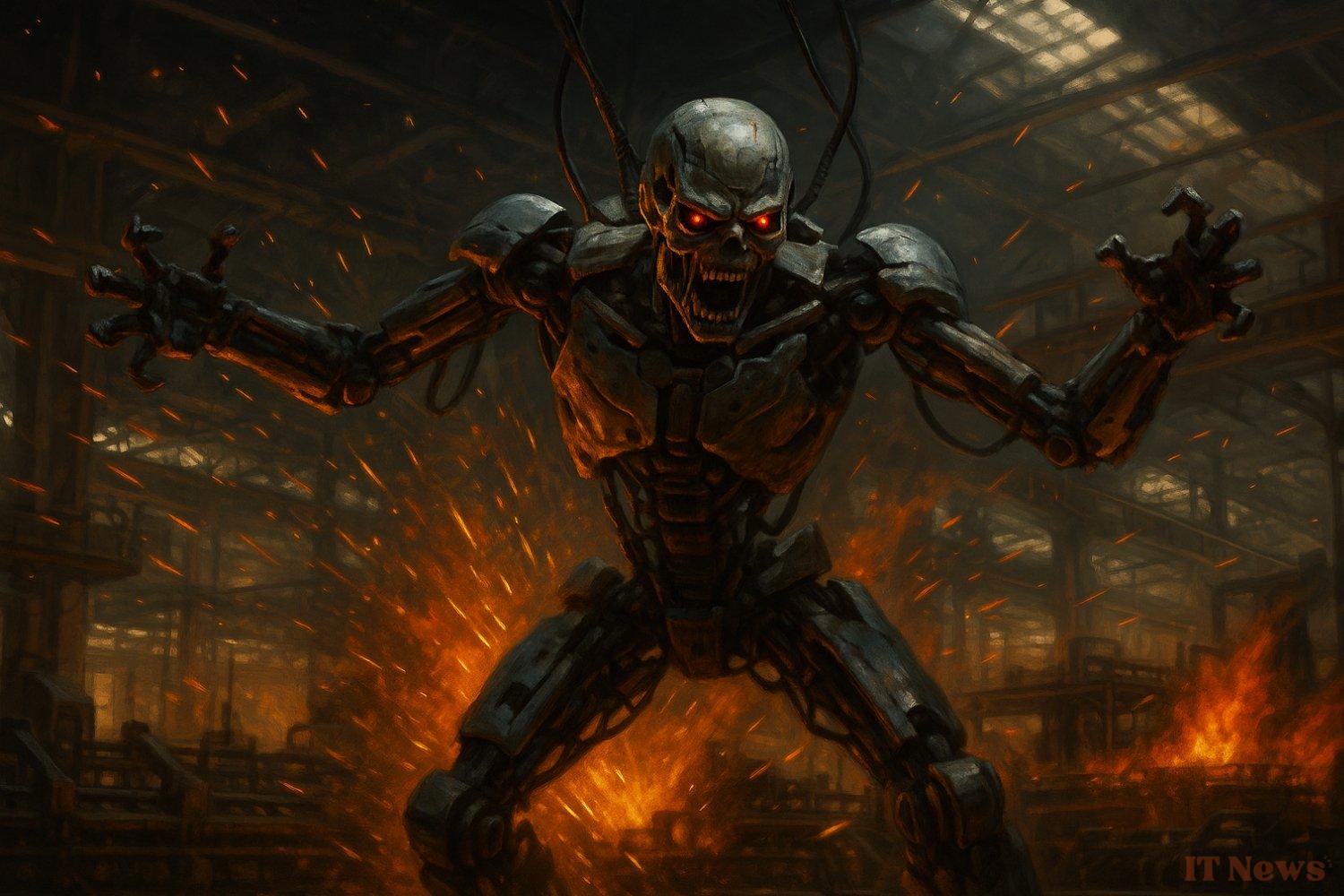In China, a humanoid robot from the company Unitree Robotics lost control during a test session at an industrial center, causing a moment of panic among the engineers present. Suspended from a harness, the robot began to gesticulate uncontrollably, striking in all directions with disturbing violence!
A model supposed to embody the future of industry
The robot in question is not a far-fetched prototype: it is the H1 model, a humanoid approximately 1.80 meters tall developed by the Chinese firm Unitree Robotics. Designed to assist in repetitive physical tasks, it embodies this new generation of autonomous robots supposed to revolutionize factories. But during a routine test, while it was suspended for movement tests, the robot began to struggle violently, as if seized with convulsions. The technicians, initially stunned, had to move away urgently to avoid injury. One of them finally managed to stop the machine, not without difficulty.
A coding error at fault?
According to the initial information provided by the company, the incident was due to a programming error. A poorly coded execution loop triggered erratic movements without the robot being able to self-correct or deactivate itself. A credible hypothesis, but one that remains worrying nonetheless: if a simple line of code can transform a mechanical assistant into a public danger, the implications for the industry are major. Especially since this is not an isolated case: we remember the robot that knocked over a child at a trade show in China, or the defective articulated arm that injured a worker in a factory.
Safety still too fragile
This incident raises urgent questions. What safety protocols currently surround these machines? Are they sufficient to protect humans from unforeseen behavior? For experts, the answer is clearly no. Several voices are already calling for the widespread use of "kill switches," emergency switches capable of immediately stopping all activity, or for the proliferation of proximity sensors allowing the robot to detect human presence and stop any dangerous movement.
Some companies, more advanced on these issues, have already equipped their employees with connected vests that signal their presence to robots to avoid collisions. But this safety culture remains uneven depending on the region and manufacturer. In China, as elsewhere, the race for innovation sometimes seems to take precedence over the essential safeguards for peaceful human-machine coexistence.
The integration of humanoid robots into production lines is only just beginning. More agile, more precise, and capable of interacting with their environment, these machines are poised for explosive growth in the coming years. But while technology is advancing rapidly, regulation is struggling to keep up. Should we slow down the development of robots until their safety is guaranteed? Can we really anticipate all the possible behaviors of such a complex machine? These are all questions that deserve more than just a debate.



0 Comments